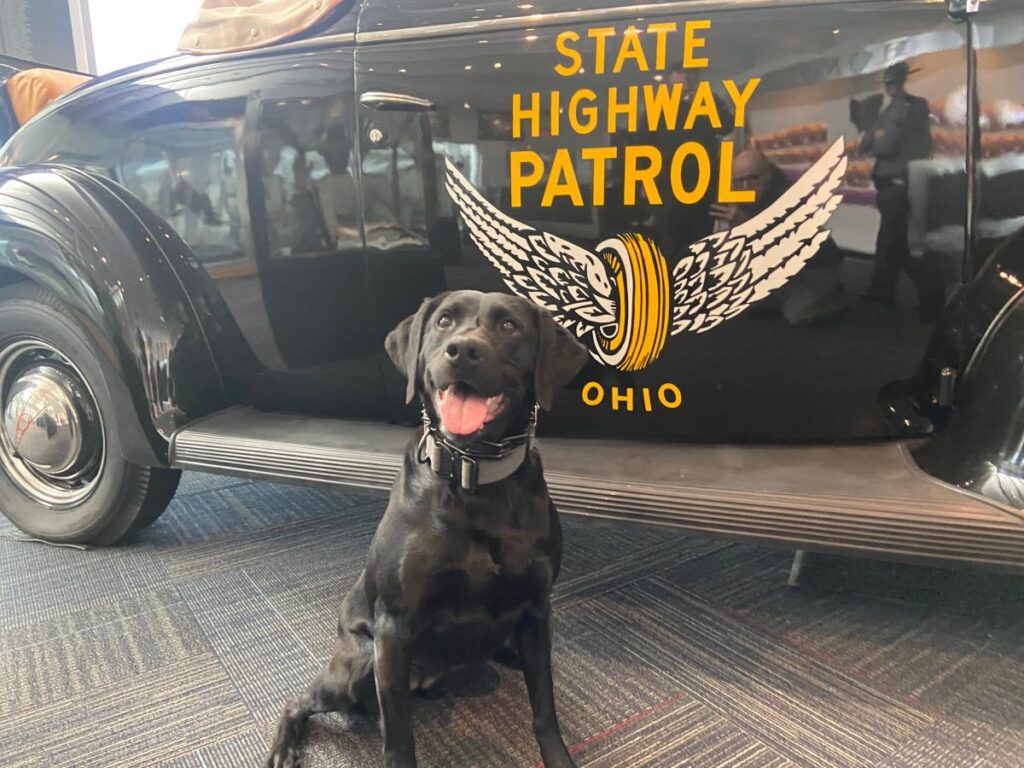Kova, a three-year-old Labrador Retriever, doesn’t get paid for her job detecting explosives for the State Highway Patrol.
Instead, she sits when she detects one of the 30 scents she’s trained to find. Then, she gets a toy.
“The entire process for them, when we train our dogs on narcotics, or we train them on explosives, they don’t know what they’re smelling,” Kova’s handler, Trooper Kurt Hedges, said. “They just know that when they find that odor, that is what gets them their toy. So, it’s all a game.”
Hedges said Kova is one of the first Labradors the patrol has used in 25 years. German Shepherds, Belgian Malinois and German Shorthaired Pointers are much more common dogs. Hedges added that Labs are typically more challenging to come by when they were the most popular breed in the U.S.
The Highway Patrol looks for a few characteristics when choosing dogs to become working dogs. They have to have a good sense of smell, high motivation to hunt and retrieve, and they have to be trainable.
Once the patrol has chosen a dog (often from out-of-state and overseas vendors), it’s time for training. The pups are presented with a wall with three holes, one of which contains a smell they will need to be able to find in the future. Once they find the source of the scent, the handler gets the dog to sit and then rewards it with a toy.
This process is repeated for each of the many explosive scents the K9s need to be able to detect. Trainers mix up the length and conditions of the exercises to ensure the dogs will stay on task in a variety of situations.
Once the dog has learned to find the eight odors required to be certified by the state, they move on to learning around 22 other scents.
At the end of the process, the highway patrol has a dog that can quickly find explosives.
To demonstrate, Hedges hid a small bundle of smokeless powder in one of the dorm rooms at the OSHP training facility. After sniffing excitedly up and down the hallway, Kova correctly identified the room the powder was in and sat in front of it.
She was rewarded with her toy, taking off running up and down the hallways with it in her mouth.
When it was time for more work, Hedges opened the door to the dorm room and let her find where exactly in the room the powder was. In less than a minute, she had found the cabinet containing the powder and sat in front of it.
She was again rewarded with her toy, spending the next minutes chewing and playing with it.
“She loves (her toy), and that’s what it takes. You have to have, it has to be a game to them that they love doing and never gets old,” Hedges said.
After a day of work, the patrol’s dogs go home with their handlers. Kova spends her free time running around Hedge’s house, playing with her toys and accompanying him on miles-long runs.
Sometimes, even the runs are not enough to tire out the energetic dog.
“I keep waiting for the puppy-ness to kind of slow up a little bit,” he said.
@NathanRHart
This article originally appeared on The Columbus Dispatch: How the Ohio State Highway Patrol trains its K9s to detect explosives
Read the full article here
